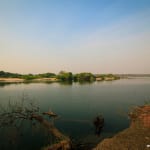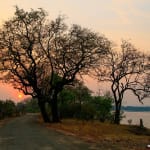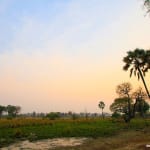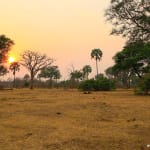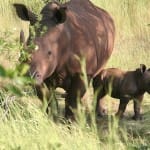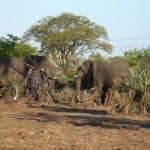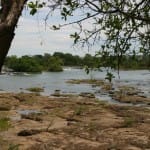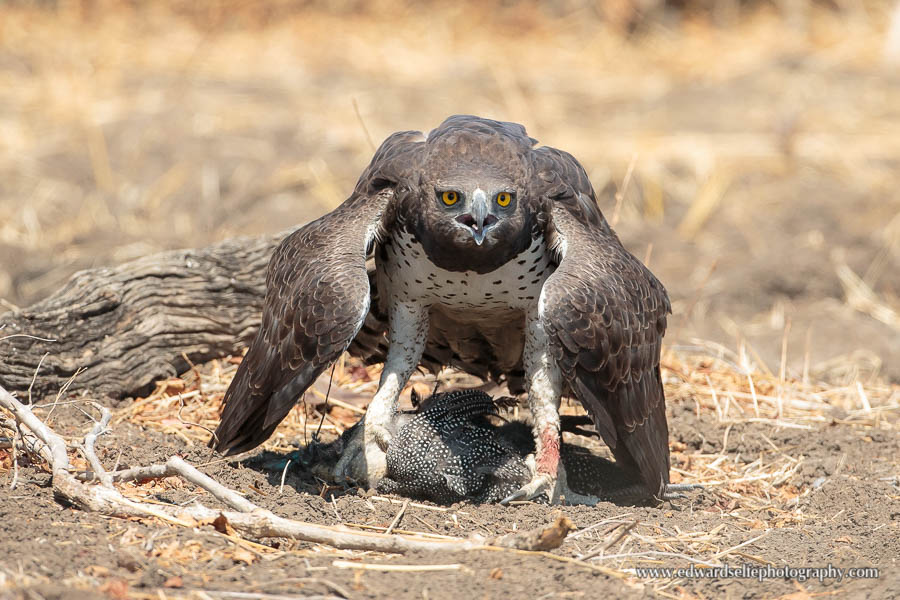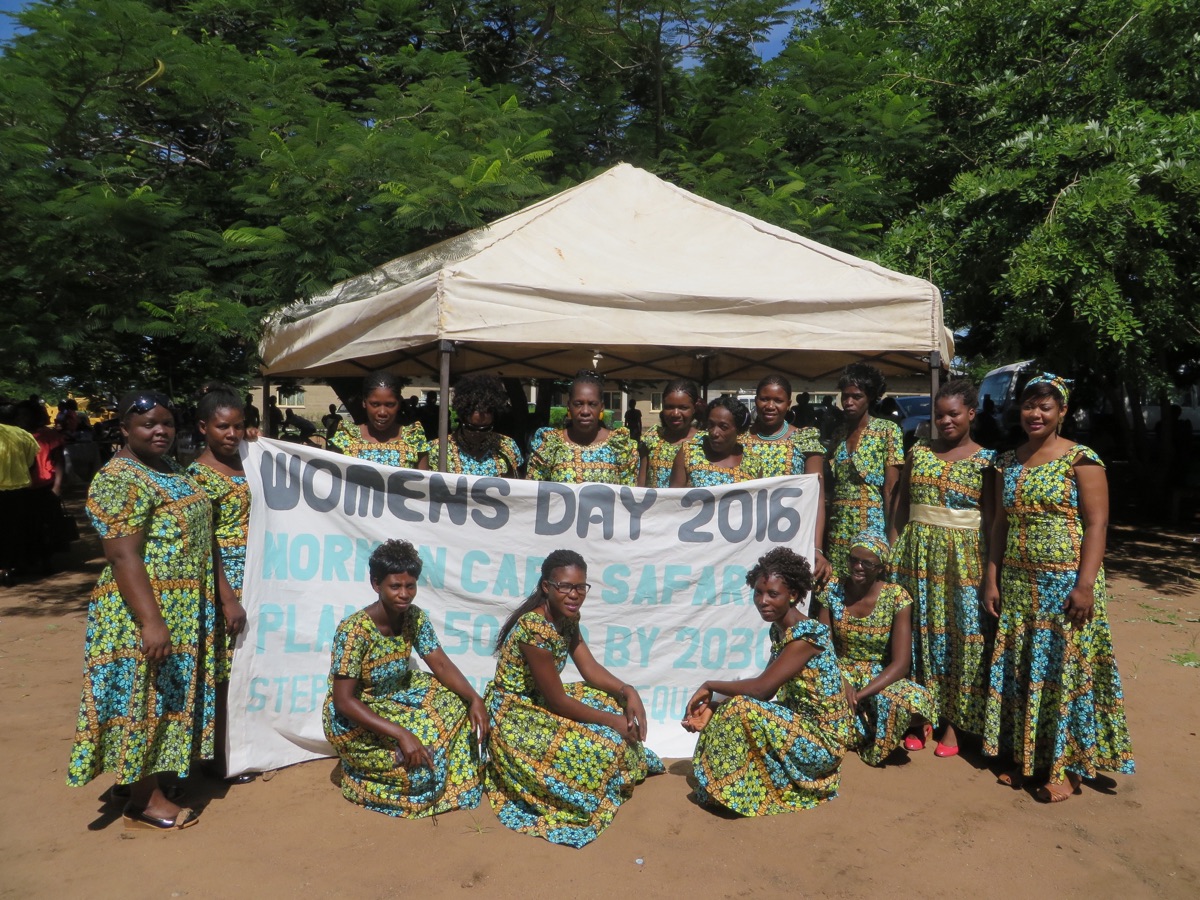MOSI OA TUNYA NATIONAL PARK
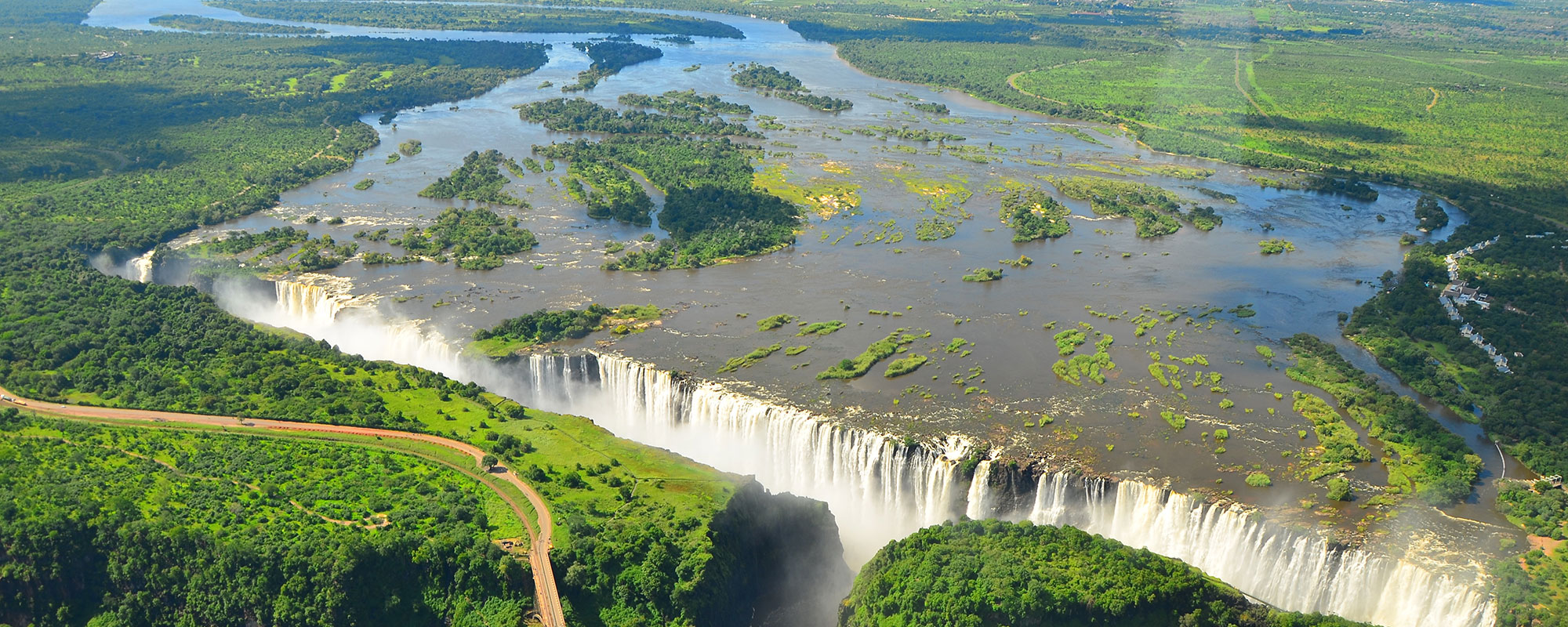
Bordered by Livingstone town, farm land and the Zambezi River, lies the wildlife area of Mosi-oa-Tunya National Park – one of Zambia’s smallest national parks. It extends from the Batoka Gorge and continues for about 12km / 7.4mi along the Zambezi River, above Victoria Falls.
Livingstone itself borders several ancient wildlife migration routes and river crossing points, some of which are still frequented by elephants. A few of these fall within the Mosi-oa-Tunya National Park, where wildlife can be found throughout the year but elephants especially during the drier months.
What makes this park unique in Zambia is that it’s the only wildlife area with white rhinos. These are closely protected from poachers by the scouts from the Department of National Parks and Wildlife.
This little sanctuary is free from predators. This, in combination with it being an area with man-made boundaries, guarantees a stable population of wildlife throughout the year. In addition to the migratory elephants, white rhino, giraffe, buffalo, waterbuck, impala, wildebeest, zebra, bushbuck, warthog, monkeys, baboon, hippo and crocodiles are residents in the park year round. They inhabit a mix of riverine forest and mopane woodland as well as grassland, which also provides a variety of habitats for numerous bird species.
Within this park is the Old Drift Crossing Point as well as Cemetery, where the first European immigrants are buried. Historically, the Old Drift was where ox-wagons were floated across the Zambezi, before there was a bridge.
This park is easily accessible from Livingstone. You can explore parts of the park by vehicle (self-drive or on a game-viewing safari), by foot on a guided walking safari with an armed ranger, and also by boat on a Zambezi River cruise.
A visit to Mosi-oa-Tunya National Park is a great activity for the family or for those who would like a taste of safari or a couple of hours away from ‘town life’ but don’t have time to travel further afield.
With everything else that Livingstone and Victoria Falls has to offer, many visitors to the area are too quick to neglect Mosi-Oa-Tunya National Park, though most will drive through at some point en route to activities. Being ‘under-visited’, however, is part of the appeal of this beautiful park and surprisingly untouched park.
The park incorporates the Eastern Cataract of the Victoria Falls (called Mosi-oa-Tunya or the Smoke That Thunders in the Koloko or Lozi language). This section is lush rainforest, sustained by the waterfall’s life-giving spray. The forest section is home to smaller antelope and warthog. And all of this right on the banks of the mighty Zambezi River. A stay here will allow you to see this special part of Zambia at its most tranquil.
MORE INFO
LATEST NEWS
South Luangwa – a World-Class Destination for Bird Photographers
The South Luangwa National Park proudly boasts a bird list totaling more than 450 species. This is certainly impressive, but perhaps more relevant is the incredible fact that it’s possible to see more than 100 species in a day! As [...]
Dreams become reality in the Central Kafue
“If your dreams don’t scare you they aren’t big enough”. We have reminded ourselves of these words so many times over the last five years or so since we began our journey to open a Bush Camp in Zambia. Rather [...]
Celebrating Women’s Day in South Luangwa
Singing to the beat of an African drum, amongst a flourish of brightly coloured Chitenge fabric, the women of Norman Carr Safaris (NCS) headed to their local Zambian district of Mambwe to celebrate International Women’s Day (IWD). Women from the [...]

